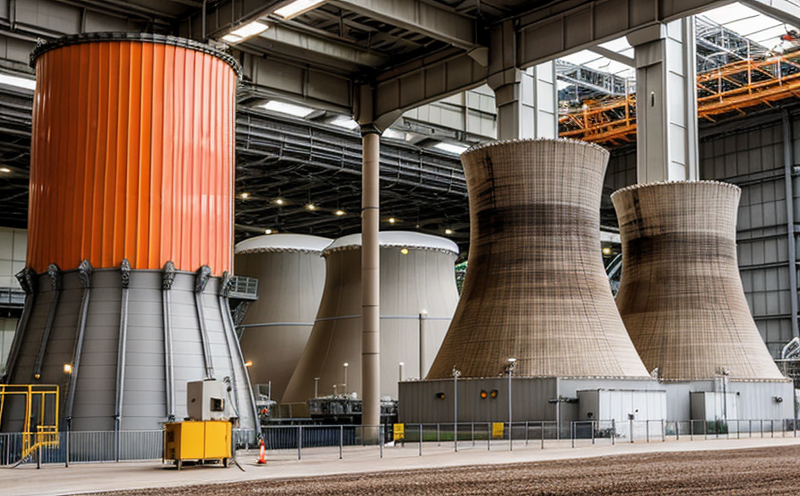ASTM E709 Magnetic Particle Testing of Nuclear Components
The ASTM E709 standard provides a detailed procedure for magnetic particle testing (MPI) to detect surface and near-surface defects in ferromagnetic materials used in nuclear power plant components. This service is crucial for ensuring the integrity, reliability, and safety of critical structures and systems within nuclear facilities.
ASTM E709 is widely recognized as one of the most effective non-destructive testing (NDT) methods to identify flaws such as cracks, voids, laminations, and other defects that can compromise the performance and lifespan of materials used in nuclear power plant applications. The test involves applying a magnetic field to ferromagnetic material using either direct or coil magnetization techniques.
The process begins with thorough preparation of the specimen, ensuring it is clean, dry, and free from contaminants that could interfere with the testing procedure. Once prepared, the component is subjected to a magnetic field generated by an external source. If there are any flaws present in the material, they will create areas where the magnetic flux lines are disrupted, leading to visible indications of the defect when a suitable magnetic contrast agent (dye or developer) is applied.
ASTM E709 requires strict adherence to several key parameters that must be controlled during testing. These include the type and concentration of magnetic particles used, the strength and uniformity of the applied magnetic field, and the duration of the inspection process. The standard also specifies detailed guidelines for interpreting test results, ensuring accurate identification of defects.
For critical components like reactor pressure vessels, steam generators, and piping systems, ASTM E709 ensures that even the smallest imperfections are detected early in their lifecycle. This proactive approach helps prevent potential catastrophic failures that could jeopardize operational safety and plant integrity.
Scope and Methodology
| Aspect | Description |
|---|---|
| Applicable Materials | Ferromagnetic materials such as steel, iron, and certain alloys. |
| Defect Detection | Surface and near-surface cracks, laminations, and other defects. |
| Testing Environment | Clean, dry environment to prevent interference with magnetic field. |
The ASTM E709 testing methodology involves several steps that must be meticulously followed. First, the component is cleaned and degreased to remove any contaminants that could affect the test results. Next, a suitable magnetic field is generated using either direct or coil magnetization techniques depending on the geometry of the component. Magnetic particles are then applied to the surface where the magnetic flux lines may be disrupted by defects.
The testing process requires careful monitoring and interpretation of the resulting indications. The standard provides detailed guidelines for evaluating these signals, ensuring accurate identification of potential flaws. Once the test is complete, the results are documented in accordance with ASTM E709 requirements, providing a comprehensive record of the inspection process.
Industry Applications
- Nuclear Power Plant Reactor Pressure Vessels
- Steam Generator Tube Sheets and Tubes
- Piping Systems for High-Pressure Services
- Turbine Blades and Rotors
- Structural Supports and Reinforcement Elements
| Component Type | Potential Defects Identified |
|---|---|
| Reactor Pressure Vessels | Surface cracks, laminations, and material flaws. |
| Steam Generator Tube Sheets | Internal corrosion and external surface defects. |
The ASTM E709 testing method is particularly valuable in nuclear power plants where the safety and reliability of critical components are paramount. By employing this rigorous NDT process, operators can ensure that even minor defects are identified before they have a chance to develop into major issues that could compromise plant integrity.
Environmental and Sustainability Contributions
- Reduces the risk of catastrophic failures leading to environmental contamination.
- Promotes the safe operation of nuclear facilities, minimizing downtime and waste generation.
- Ensures compliance with regulatory standards for nuclear safety.
- Contributes to sustainable energy production by enhancing operational efficiency and reliability.
The use of ASTM E709 magnetic particle testing in the nuclear sector plays a significant role in environmental protection. By identifying defects early, it helps prevent accidents that could result in radioactive material releases or other forms of contamination. This proactive approach not only ensures safer operations but also contributes to overall sustainability by optimizing resource usage and reducing waste.





